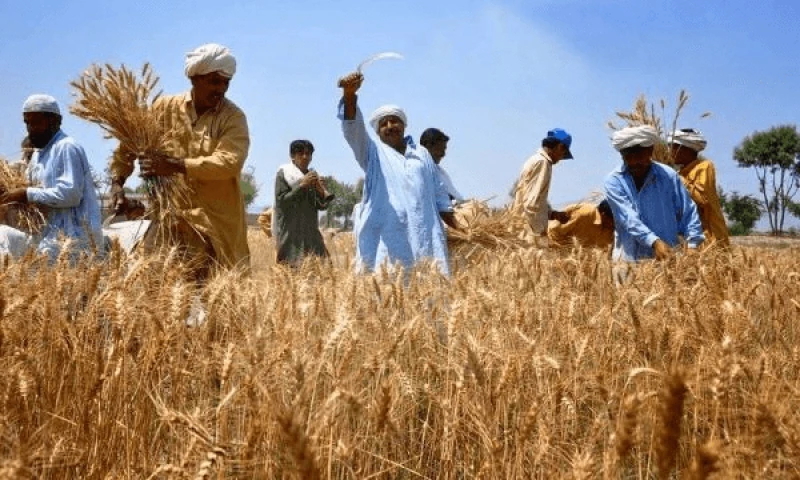Where did wheat come from? Uncovering the grain’s genetic genesis at the dawn of agriculture
Where did wheat come from? Uncovering the grain’s genetic genesis at the dawn of agriculture


From the dawn of agriculture, about 10,000 years ago, to modern genetic improvement techniques, wheat has been a key witness and actor in the evolution of human nutrition. Frequently when talking about food, and wheat and its derivatives, one hears the adjective ‘natural’. But the distinction between ‘natural’ and ‘artificial’ in agriculture is often meaningless. Agriculture is, ultimately, a manifestation of human intervention in natural processes. An artificial process, whose resulting products are also artificial. The wheat we eat today does not exist in nature.
Wheat (genus Triticum), native to the fertile Middle East, has undergone an epic journey through time and space. The evolution of wheat has been shaped by artificial selection, from the oldest known species , such as einkorn (Triticum monococcum), farro (T. dicoccum) or spelt (T. spelta), to the modern species of durum wheat (T. durum) and soft or baker’s wheat (T. aestivum). Early farmers learned to choose seeds with desirable characteristics, such as larger, more productive ears or more voluminous grains.
…
One of the evolutionary ancestors of modern wheat can still be found in nature. A wild wheat, with a diploid chromosome set – the chromosomes distributed in pairs, specifically, 7 pairs -, which is called Triticum urartu. There are also other wild plants, very closely related to wheat, called goat grass.
[Editor’s note: This article has been translated from Spanish and edited for clarity]
This is an excerpt. Read the original post here

 | Videos | More... |

Video: Nuclear energy will destroy us? Global warming is an existential threat? Chemicals are massacring bees? Donate to the Green Industrial Complex!
 | Bees & Pollinators | More... |

GLP podcast: Science journalism is a mess. Here’s how to fix it

Mosquito massacre: Can we safely tackle malaria with a CRISPR gene drive?

Are we facing an ‘Insect Apocalypse’ caused by ‘intensive, industrial’ farming and agricultural chemicals? The media say yes; Science says ‘no’
 | Infographics | More... |

Infographic: Global regulatory and health research agencies on whether glyphosate causes cancer
 | GMO FAQs | More... |

Why is there controversy over GMO foods but not GMO drugs?

How are GMOs labeled around the world?

How does genetic engineering differ from conventional breeding?
 | GLP Profiles | More... |

Alex Jones: Right-wing conspiracy theorist stokes fear of GMOs, pesticides to sell ‘health supplements’




 Viewpoint — Fact checking MAHA mythmakers: How wellness influencers and RFK, Jr. undermine American science and health
Viewpoint — Fact checking MAHA mythmakers: How wellness influencers and RFK, Jr. undermine American science and health Viewpoint: Video — Big Solar is gobbling up productive agricultural land and hurting farmers yet providing little energy or sustainabilty gains
Viewpoint: Video — Big Solar is gobbling up productive agricultural land and hurting farmers yet providing little energy or sustainabilty gains Fighting deforestation with CO2: Biotechnology breakthrough creates sustainable palm oil alternative for cosmetics
Fighting deforestation with CO2: Biotechnology breakthrough creates sustainable palm oil alternative for cosmetics Trust issues: What happens when therapists use ChatGPT?
Trust issues: What happens when therapists use ChatGPT? 30-year-old tomato line shows genetic resistance to devastating virus
30-year-old tomato line shows genetic resistance to devastating virus California, Washington, Oregon forge immunization alliance to safeguard vaccine access against federal undermining
California, Washington, Oregon forge immunization alliance to safeguard vaccine access against federal undermining The free-range chicken dilemma: Better for birds, but with substantial costs
The free-range chicken dilemma: Better for birds, but with substantial costs ‘You have to treat the brain first’: Rethinking chronic pain with Sanjay Gupta
‘You have to treat the brain first’: Rethinking chronic pain with Sanjay Gupta
